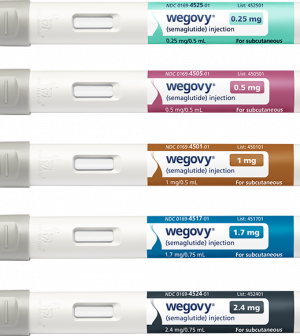- Understanding the Connection Between Anxiety and Depression
- How Daily Prunes Can Influence Cholesterol and Inflammation
- When to Take B12 for Better Absorption and Energy
- Epsom Salts: Health Benefits and Uses
- See What Saffron Can Do for Sleep and Heart Health
- 6 Common Mistakes to Avoid Before Your Physical
- Can Sweating Really Help You Beat a Cold?
- Strengthening Your Relationship: Practical Strategies
- Skip Storing This Everyday Product in the Fridge Door
- Green Tea + B3 Pairing May Boost Brain Health
Use of GLP-1 Meds Have Risen 7-Fold Among Young Americans

The number of American teens and young adults who’ve been prescribed one of the new GLP-1 weight-loss drugs soared nearly seven-fold between 2020 and 2023, a new report finds.
That’s compared to an overall decline of about 3% in young Americans’ use of other types of prescription meds.
But how safe are drugs like Ozempic, Wegovy, Mounjaro and Zepbound for young users?
That remains unclear, said a team led by Dr. Joyce Lee, a professor of pediatrics at the University of Michigan Medical School in Ann Arbor.
“Evaluation of the long-term safety, efficacy and cost- effectiveness of GLP-1RAs in adolescents and young adults is needed,” her team wrote.
The findings were published May 22 in the Journal of the American Medical Association.
The new study used a major U.S. prescription drug database to calculate the medication use of adolescents (ages 12 to 17) and young adults (ages 18 to 25) for the years 2020 through 2023.
Besides the four drugs mentioned above, the GLP-1 meds that were tracked included dulaglutide (Trulicity), exenatide (Byetta) and liraglutide (Saxenda).
Lee’s team found that over the three years of the study, GLP-1 prescriptions among people ages 12 to 25 jumped by more than 594% (equivalent to a nearly sevenfold rise).
In sheer numbers, that means that while 8,722 Americans in this age group took a GLP-1 in 2020, 60,567 were doing so by the end of 2023.
Among adolescents, the rate of use rose six-fold among boys and nearly seven-fold among girls, and among young adults the uptick in use was close to five-fold among men and almost eight-fold among women, the study found.
“Increases in GLP-1RA dispensing were greatest for females, highlighting the importance of educating patients and prescribers on sex-specific safety risks [eg, concerns during pregnancy],” the team noted.
Many of these new prescriptions were aimed at curbing type 2 diabetes or as a means of losing weight, or both.
“In both age groups, the last dispensed prescription in 2023 was most commonly for injectable semaglutide [Ozempic] for type 2 diabetes,” Lee’s group noted.
The researchers believe more caution and communication when dispensing GLP-1s to the young may be needed.
“Efforts to promote safe and appropriate prescribing should include endocrinologists, family medicine physicians and nurse practitioners, given their prominent roles” in prescribing these medications, the team said.
More information
Find out more about GLP-1 medications at the Mayo Clinic.
SOURCE: Journal of the American Medical Association, May 22, 2024
Source: HealthDay
Copyright © 2026 HealthDay. All rights reserved.










